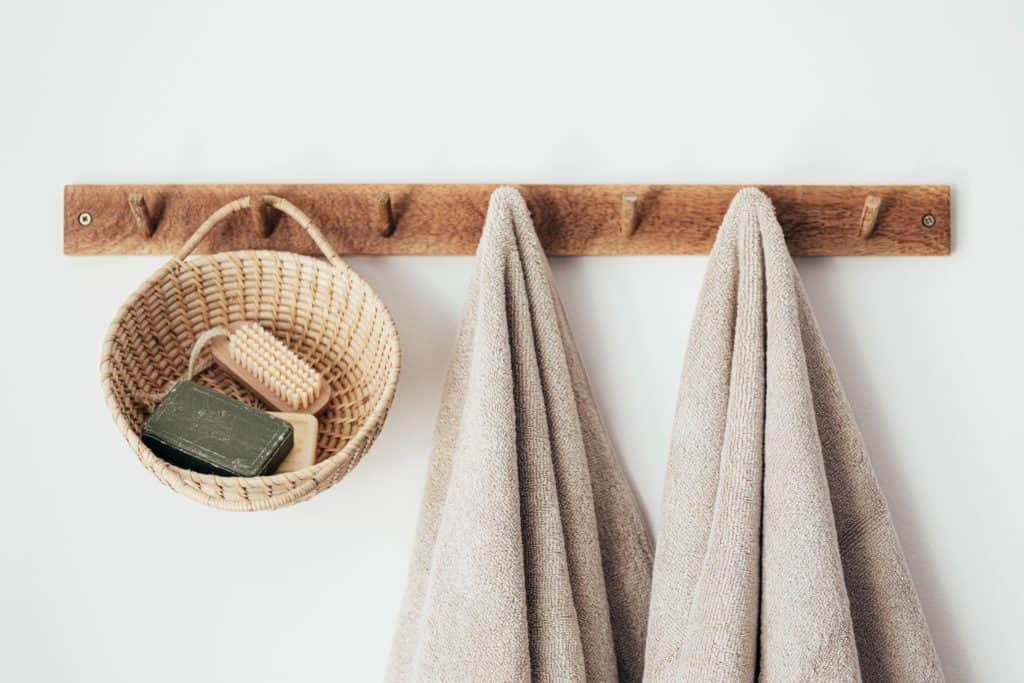First published: 9 March 2022 @ 6:00 pm
You know the feeling when you go to your closet and see holes in clothes you rarely wear? This can be the result of the clothes-eating bugs that live in your closet.
These critters can get into our clothes through our shoes, pant legs, pockets, and more. They will eat our clothing and ruin it for good.
You may not even know that you have these pests until they start eating your clothing.
The good news is that there are many ways to get rid of these bugs and stop them from getting into your home again.
What are Clothes-Eating Bugs?

Clothes-eating bugs are insects that feed on clothing. The most common are clothes moths, but other insects such as beetles and spiders may also be involved.
Clothes months and other clothes-eating bugs tend to be a problem in the spring and summer, when they can be attracted to clothes left outdoors in warm weather.
They are especially problematic when they occur indoors, as they may eat their way through wool clothes or denim jackets. Clothes moths can also attack leather and suede items.
Moths are not the only insects that can ruin clothes. Some of the bugs that you should beware of include termites, cockroaches, beetles, crickets, silverfish, and firebrats.
They want to get the food that we leave on our clothes, through stains, body fluids, and body soil. Unfortunately, most of them find their way into household objects that are stored.
How Can I Get Rid of a Clothes Moth Infestation (and Other Bugs, Too)?
If you have clothes-eating infestations in your closet, there are several ways to get rid of them. They work different for each bug, so let’s go down the list one by one.
1. Getting Rid of Common Carpet Beetles
The species of carpet beetles that you will see in your home can eat carpet fibers and leave small holes.
After the egg hatches, it starts feeding on natural fibers that include wool, mohair, fur, and feathers.
These larvae are most often found on your clothing, but they can crawl from place to place. They can hide in any dark crevices, including air ducts, closets and behind baseboards.
In order to control the carpet beetles, it is important to thoroughly clean the baseboards, corners, and edges of the carpeting.
Basically, go through areas where debris accumulates, since that’s what feeds the beetles.
If beetles are detected, it is recommended that all clothing storage areas are emptied completely. This way, each clothing can be cleaned properly.
Vacuum thoroughly your floors and carpets, going in different directions, in order to remove adult, eggs and larvae.
Finally, you should dispose of the vacuum bag outside your home as soon as possible. The vacuum cup should be emptied into a plastic disposable bag to prevent re-infestation.
There are also some insecticides that are effective against carpet beetles. However, they may be toxic to pets and children, so make sure to read thoroughly.
2. Getting Rid of Clothes Moths
There are millions of adult moths in this world, and some of them are very beautiful. The ones that you often see munching on your favorite woolen items, though? Not so much.
These are known as the webbing clothes moth and the case-bearing clothes moth (or case-making clothes moth). The most common of signs of moths include
Clothes-eating moths can be repelled naturally in many ways. Natural moth repellents include using dried lavender, essential lavender oils, and cedar blocks or cedar oil.
If you want them to be effective, it is necessary that your storage area is tightly sealed, so that all the natural products will stay fresh.
When you are using a cedar chest for pest control, they must be sanded and the oils must be refreshed at least once every year.
If you suspect that there is a moth infestation, freeze your clothes for 72 hours. That will kill the moth eggs and larvae.
In fact, high temperatures can kill insects that are in woolen materials.
Take your woolen clothes outside every month or so, brush them, and expose them to sunlight. This is an effective way of controlling moths.
You can also use adhesive-lined moth traps, but they can be more expensive.
3. Getting Rid of Termites
Few people consider clothing damage to be caused by termites. They are drawn to food that is stained by body soil, food, or beverage.
Then, as they eat, they cut into the cloth, and sometimes there are holes in the cloth.
You may have found that termites are infesting your clothing area, so it is possible that the problem is widespread throughout your home.
By cleaning your closets and washing your dirty clothes promptly, you can change the situation.
It is also important that you remove all the dirt from outdoors and firewood from around the foundation of your house. You need to reduce the humidity of your living space.
At the end of the day, though, you will need commercial pest control in order to fully get rid of termites in your home.
4. Getting Rid of Cockroaches

Cockroaches are the most common pests in homes and businesses. They usually prefer dark, moist areas and can travel long distances in search of food and water.
Cockroaches also pose a health risk because they carry bacteria that cause disease.
If you want to get rid of cockroaches from your home or business premises for good, there are several methods that you can use.
You can get rid of the roaches by cleaning and disinfecting the areas around your clothes. Take away the soiled clothes and vacuum away the bugs, eggs, and droppings.
You are then able to use residual insecticides and baits to control the cockroach infestation. Use insecticides that contain Baygon and propoxur.
You can also try non-pesticide methods to control cockroaches. But it is an ongoing process of sanitation and good home repair.
The openings of any electric lines or water pipes that pass through walls and floors should be sealed. Repair any plumbing leaks and other moisture sources.
Then food crumbs and garbage should be removed from the home daily. You must wash soiled clothing promptly.
Read more about cleaning pests from your house and other home maintenance tips at HandyWork. Visit us now!

